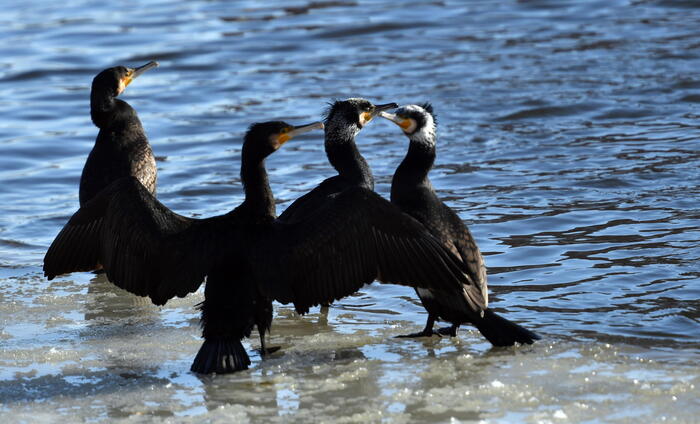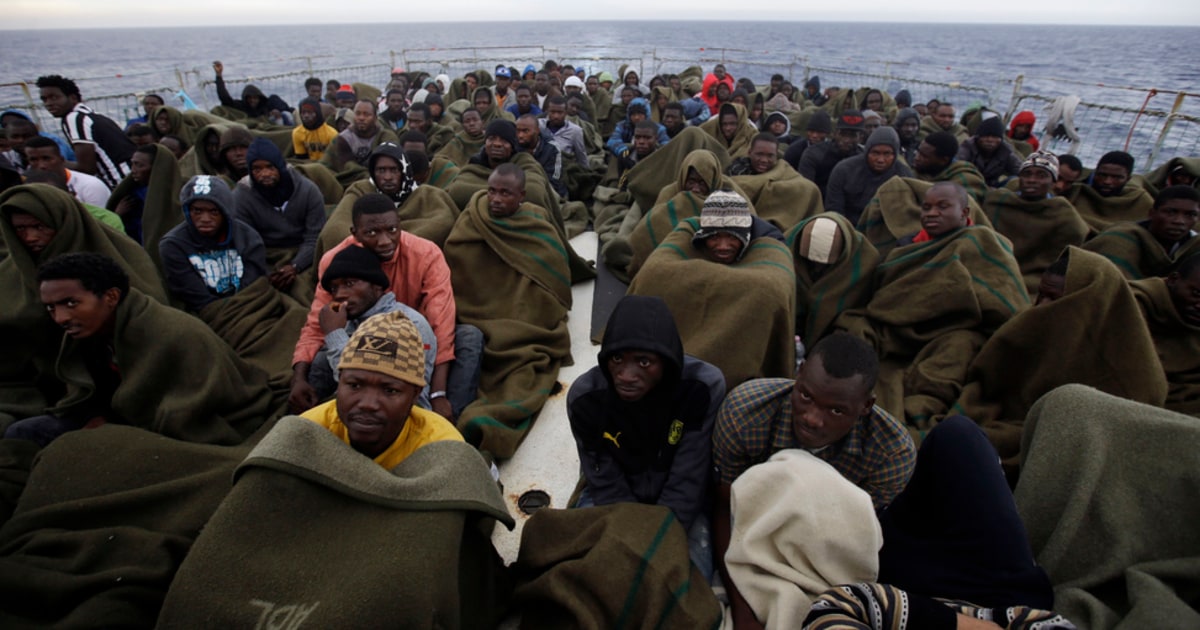There is a children's game that persists in towns along the rocky Mediterranean coast: be the first to spot where the cormorant
(
corb marí,
in Catalan) will emerge from once the bird dives into the sea.
Like an underwater missile with feathers, the animal is capable of going 50 meters into the depths in search of a fish to emerge more than a minute later, already with the prey in its beak.
The problem is that when it ingests it, it is more than likely that it will do so with a garnish of microplastics: 9 out of 10 specimens of this species from the Catalan coast have traces of this material in their stomachs, according to a recent study carried out by a team of the University of Girona (UdG).
Although it can also fly, the Mediterranean shag (
Phalacrocorax aristotelis desmarestii
) prefers to dive.
The bird links its life to the deep sea and to the rocks, where it nests and rests after its furtive dives.
"We have come to find fishing lines and even a two-cent coin in their stomachs," explains Carles Tobella, a biologist with the Desmares III research project, from the Animal Biology group, which has prepared the study.
Remains of plastics found in the stomachs of the cormorantXènia Frigola
The analyzes of plastic remains were carried out in two ways: necropsiing specimens found dead and analyzing the pellets (undigested remains) of the animal.
The bird, accustomed to ingesting spines, regurgitates balls at night to expel the remains through an acid that it generates.
With a long neck, it has black plumage that makes it invisible among dark caves dotted with salt water.
The last rays of the sun on its black plumage uncover green tones on its body.
To dry its feathers, it spreads its wings and remains oriented to the sun and impassive to the waves.
"First thing in the morning we went to look for the remains among the rocks in areas of the Costa Brava and Maresme," adds Guillem Arrufat, one of the authors of the study, who points out that the most frequent type of plastic found has been the fibers, whose origin they are investigating, although there are already theories.
“More remains have been detected on the Maresme coast (that of Barcelona).
That may be because it is an area where agriculture and torrents that cross the fields and towns to flow into the sea are frequent, ”he cites.
The main color of plastics is black, followed by red and blue.
The color of the samples, the study authors believe, gives valuable clues.
"Agricultural and textile remains may be the origin," emphasizes Tobella.
A cormorant on the Catalan coast. Júlia Ferrer
Among other curiosities that the study collects is that females accumulate more plastics inside.
Although this may be due to a simple coincidence, the biologist believes that it will be interesting to analyze it in the following phases of the study, which will focus on studying their movements through the 72 GPS devices installed on their bodies.
Geolocation studies in recent years have provided very valuable information about their migrations.
One of the 2019 promoted by the Generalitat shed light on how each summer specimens cross the channel that separates Menorca with Cap de Creus (Catalonia) in six hours to reproduce and avoid inbreeding of the species.
The youngest specimens can travel from the Balearic Islands to the Peninsula and return the same day, according to the biologist of the Cap de Creus Natural Park Gerard Carrión.
The species was in serious danger in the 1970s, with little more than four pairs in this area of the Peninsula, a victim of artisanal fishing gear with nets, which hooked the animal on too many occasions with a fatal end.
Currently it is estimated that there are around 50 couples in Catalonia.
The increase is due, says Tobella, largely to the decrease in harmful fishing gear against the species associated with the progressive reduction of the fishing fleet.
The biologist also values the collaboration they are having with the fishermen to apply new techniques to avoid entanglement, such as installing lights on the nets that keep them away from the traps.
Apart from fishing, the biologist Miguel McMinn, who collaborates with the Balearic Government, points to another practice that also affects the animal: cliff climbing (psicobloc), now on the rise.
In the Balearic Islands, where there is its largest population, the number of specimens fell in the 1990s but has remained stable in recent years.
There are around 1,000 pairs.
In summer, the animal has become accustomed to coexisting with mass tourism.
It is easy to spot specimens perching on the rocks and coves of coastal towns among swimmers, yachts and jet skis: the perfect allegory of the resistance of emblematic species to the transformation of the coast to mass tourism.
Although the noise, Tobella emphasizes, does disturb them, it is a bird with a very serene and patient character in the face of human presence.
Although there is always someone who gets too close and ends up receiving a scolding from the locals,
In winter, when the rocky coasts of the islands are emptied of the boats that blacken their waters with fuel, it is possible to spot the cormorant technique from the surface while fishing under the sea.
The clarity of the waters betrays its graceful movements when it heads towards schools of fish, which, in their flight from the bird, group together to move in sync, like starlings in the air.
The bird goes after them in a kind of furtive dance of the sea.
You can follow EL PAÍS Catalunya on
and
, or sign up here to receive
our weekly newsletter
Subscribe to continue reading
read without limits
Keep reading
I'm already a subscriber






/cloudfront-eu-central-1.images.arcpublishing.com/prisa/C47ZFYHHZJCNZHEXEAAYXSS4VU.JPG)

